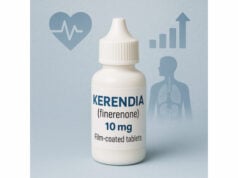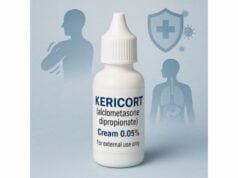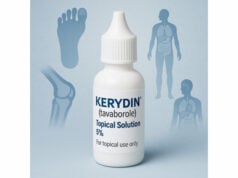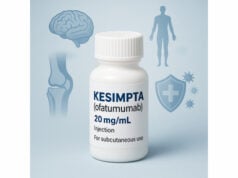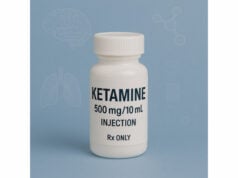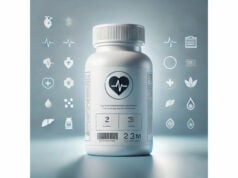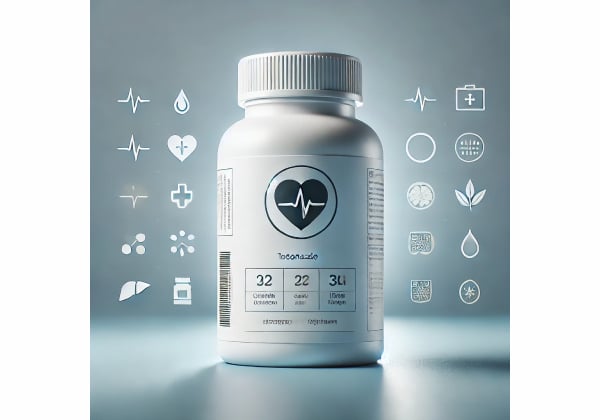
Ketoconazole is a well-established antifungal medicine used mainly on the skin and scalp to treat yeast and dermatophyte infections. In topical forms—shampoos, creams, foams, and gels—it helps control dandruff and seborrheic dermatitis, clear tinea versicolor, and treat ringworm of the body, groin, and feet. Because ketoconazole targets ergosterol synthesis—a vital component of fungal cell membranes—it stops fungi from growing and spreading. Topical treatments are favored because they work where the problem is and have limited systemic absorption. Oral ketoconazole tablets exist but are rarely used today due to the risk of severe liver injury and serious drug interactions; safer systemic azoles are preferred in most cases. This guide explains how ketoconazole works, when to use topical options, what dosing looks like by condition and formulation, what to avoid, how to limit relapses, and the safety rules that matter. You will also find a practical evidence summary to help you weigh ketoconazole against common alternatives and to use it confidently and safely under professional guidance.
Fast Facts
- Effective for seborrheic dermatitis and dandruff (scalp) and tinea versicolor on trunk; improves scaling and itch.
- Typical topical doses: 2% shampoo once as a single application for tinea versicolor or twice weekly for 2–4 weeks for scalp dermatitis; 2% cream once daily for 2 weeks (tinea corporis/cruris) or 6 weeks (tinea pedis).
- Oral ketoconazole tablets are not first-line for any infection due to liver toxicity and major interactions.
- Avoid oral ketoconazole in liver disease; use topical with caution if you had prior severe reactions to azoles.
- Consider alternatives (e.g., selenium sulfide, pyrithione zinc, terbinafine) if irritation persists or response is incomplete.
Table of Contents
- What ketoconazole is and how it works
- Where it helps and when it doesn’t
- How to use ketoconazole correctly
- Dosage by condition and formats
- Safety risks, interactions, and who should avoid
- Evidence at a glance and common questions
What ketoconazole is and how it works
Ketoconazole is an imidazole antifungal that interferes with fungal cell-membrane integrity. Fungi rely on ergosterol to maintain membrane structure and function. Ketoconazole inhibits enzymes (notably lanosterol 14-α-demethylase) involved in ergosterol synthesis. The result is a leaky membrane and impaired growth or death of susceptible organisms. This mechanism covers common dermatophytes (Trichophyton, Microsporum, Epidermophyton), Candida species on skin folds, and Malassezia yeasts that drive seborrheic dermatitis and tinea versicolor.
Topical formulations target high concentrations to the skin and scalp while keeping systemic exposure minimal. That is why shampoos and creams are first choice for dandruff, seborrheic dermatitis, tinea versicolor, and many ringworm infections of the body and groin. Because Malassezia is part of normal skin flora, suppression—not permanent eradication—is the realistic goal in scalp disease; periodic maintenance may be needed after a clearing phase.
Oral ketoconazole was once a common systemic antifungal. Today, its use is tightly limited because serious liver injury and adrenal effects have been reported, sometimes without obvious risk factors. Safer oral options (itraconazole, fluconazole, voriconazole, posaconazole, isavuconazole) usually provide similar or better coverage with more favorable risk–benefit profiles. In practice, most patients will never need oral ketoconazole; when systemic treatment is necessary, clinicians choose other azoles unless no alternative is suitable.
Ketoconazole also has mild anti-inflammatory effects, which may contribute to symptom relief in seborrheic dermatitis beyond antifungal activity alone. That dual action explains why itch and redness often improve alongside flaking. However, improvement timelines vary: scalp symptoms can ease within days to a week, whereas pigment changes from tinea versicolor can take weeks to months to normalize after the yeast is cleared.
In short, ketoconazole is a targeted tool. Used on the right condition, in the right form, and for the right duration, it reliably reduces fungal load and inflammation with a favorable safety margin—especially when applied to the skin or scalp.
Where it helps and when it doesn’t
Conditions where ketoconazole commonly works well
- Seborrheic dermatitis and dandruff (scalp): These conditions involve an inflammatory reaction to Malassezia yeasts, producing flakes, itch, and redness. Ketoconazole shampoo lowers yeast counts and inflammation, improving scale and itch scores. It is a mainstay for moderate to severe scalp involvement and can be paired with keratolytics (salicylic acid) or short courses of anti-inflammatory agents for stubborn flares.
- Tinea versicolor (pityriasis versicolor): Characterized by hypo- or hyperpigmented patches on trunk and shoulders due to Malassezia overgrowth. Topical ketoconazole—especially as a 2% shampoo used on the skin—clears the organism in most cases. Pigment changes resolve gradually after yeast suppression.
- Dermatophyte infections on the body and groin (tinea corporis, tinea cruris): Ketoconazole cream is one of several effective azoles. Once-daily applications for two weeks typically suffice when the area is limited, dry, and non-hair-bearing.
- Cutaneous candidiasis (intertrigo): Moist skin folds (under breasts, groin, armpits) respond to once-daily ketoconazole cream, plus drying and friction-reduction measures.
- Adjunctive role in face and chest seborrheic dermatitis: Cream or low-residue foam/gel formulations help areas where shampoo is inconvenient.
Where ketoconazole is not first choice
- Nail fungus (onychomycosis): Topical ketoconazole does not penetrate the nail plate effectively; systemic or nail-penetrating topical alternatives are used instead.
- Extensive or hair-bearing dermatophyte infections (e.g., moccasin-type tinea pedis, tinea capitis): These often require other agents or systemic therapy. Tinea capitis requires oral antifungals; shampoo alone will not cure it, though it may reduce spread.
- Bacterial skin conditions and psoriasis: Ketoconazole targets fungi and yeast. Bacterial infections need antibiotics; psoriasis needs disease-specific therapy (though shampoo vehicles may soothe scale temporarily).
- Oral therapy as first line for superficial infections: Oral ketoconazole tablets are not indicated for skin or nail disease and are avoided for routine infections because of safety concerns.
When to consider an alternative or add-on
- Limited response after 2–4 weeks of appropriate use: Confirm the diagnosis (potassium hydroxide prep or culture, if needed). If it is not fungal or yeast-driven, antifungals will underperform.
- Marked inflammation or itch: A brief, low-to-medium strength topical corticosteroid or nonsteroidal anti-inflammatory (e.g., pimecrolimus) can be used alongside ketoconazole during flares, then tapered.
- Recurring tinea versicolor: Intermittent prophylaxis with ketoconazole shampoo (e.g., once weekly or once monthly on the trunk during warm seasons) can reduce relapses; tailor to your pattern.
- Irritation from the product: Switch vehicle (e.g., from shampoo to foam/gel for face or from cream to another azole) or reduce frequency once control is achieved.
The key is matching formulation and schedule to the organism and site. When the diagnosis fits, ketoconazole is reliable; when it does not, adjusting course early saves time and skin.
How to use ketoconazole correctly
Shampoo (2%) for scalp or trunk
- Wet the area thoroughly. For scalp, shampoo like regular shampoo; for trunk/shoulders in tinea versicolor, apply as a body wash to affected skin and a margin around it.
- Lather and wait 5 minutes. Contact time matters; set a timer.
- Rinse completely. Avoid eyes and mucous membranes; if exposed, rinse copiously.
- Schedule:
- Seborrheic dermatitis/dandruff: Common clearing phase is twice weekly for 2–4 weeks, then once weekly or every other week as maintenance if flares recur.
- Tinea versicolor: Many labels allow a single application left on for 5 minutes and rinsed, with retreatment only if needed. Some clinicians prefer daily for 3 days for faster clearance in extensive disease; follow your prescriber’s instructions.
Cream (2%) for skin lesions
- Clean and dry the skin. Pat—do not rub—folds or moist areas.
- Apply a thin film once daily to the lesion and about 1–2 cm of surrounding skin.
- Allow to absorb before clothing.
- Duration depends on diagnosis:
- Tinea corporis/cruris or cutaneous candidiasis: Once daily for 2 weeks.
- Tinea pedis: Once daily for 6 weeks.
- Seborrheic dermatitis (non-scalp): Twice daily for 4 weeks, then step down to the lowest frequency that maintains control.
Foam, gel, and low-residue vehicles
- Useful on hair-bearing or facial areas where creams feel heavy. Apply as directed (often once or twice daily for 2–4 weeks) to reduce scale and erythema.
- Avoid near the eyes; gels and foams can sting.
Hygiene and environmental tips
- For tinea versicolor: Wash workout clothes and pajamas frequently; choose breathable fabrics; shower after sweating; consider maintenance washes during warm, humid months.
- For groin and foot infections: Dry thoroughly after bathing; change socks mid-day if feet sweat; use flip-flops in communal showers; alternate shoes to let them dry.
- For seborrheic dermatitis: Use a gentle cleanser between medicated washes; avoid harsh styling products that increase irritation; consider rotating shampoos (e.g., ketoconazole plus tar, selenium sulfide, or pyrithione zinc) to minimize tachyphylaxis and irritation.
When to escalate or re-evaluate
- No improvement by 2 weeks (body/groin) or 4 weeks (scalp/face) despite correct use.
- Worsening redness, swelling, or pain—consider bacterial superinfection, steroid misuse, or incorrect diagnosis.
- Extensive or scarring lesions, involvement of nails or scalp hair shafts, or recurrent disease affecting quality of life—seek specialist advice.
Using the right product, in the right way, for an adequate period is half the battle. The other half is setting realistic goals—symptoms usually improve first, while pigment changes or residual flakiness can lag behind.
Dosage by condition and formats
Below are practical, clinician-aligned ranges. Always follow the specific instructions on your product label and your prescriber’s plan.
Seborrheic dermatitis and dandruff (scalp)
- 2% shampoo: Apply to wet scalp, lather, leave 5 minutes, rinse. Use twice weekly for 2–4 weeks for clearing; then once weekly or every other week as maintenance if needed.
- 1% shampoo (where available): Often used every 3–4 days for up to 8 weeks; then as needed for maintenance.
- Cream/gel/foam (face, ears, chest): Apply thinly to affected areas; twice daily for 2–4 weeks is common, then taper frequency to maintain control.
Tinea versicolor (trunk/shoulders)
- 2% shampoo to skin: Apply to damp skin of affected areas and a wide margin, leave 5 minutes, rinse. One application is often sufficient; some clinicians use daily for 3 days in extensive cases.
- 2% cream: Once daily for 2 weeks if shampoo is impractical or as adjunct.
- Maintenance (prone to relapse): Consider once-weekly or once-monthly prophylactic washes during hot, humid months.
Tinea corporis (ringworm of the body) and tinea cruris (jock itch)
- 2% cream: Apply once daily for 2 weeks to lesions and a small surrounding margin.
- Reassess if incomplete response; confirm diagnosis and consider alternative antifungals or brief anti-inflammatory add-on.
Tinea pedis (athlete’s foot)
- 2% cream: Once daily for 6 weeks (moccasin-type disease may be slower).
- Add drying measures: toe spacers for airflow, antifungal shoe sprays, and frequent sock changes.
Cutaneous candidiasis (intertrigo)
- 2% cream: Once daily for 2 weeks, plus moisture control (absorbent powders, breathable clothing).
- For macerated folds, combine with barrier pastes and address friction.
Oral ketoconazole (tablets)
- Not first-line for any infection due to risk of severe hepatotoxicity and major drug interactions. In rare, specialist-managed cases of certain endemic mycoses where alternatives are unavailable or not tolerated, historical dosing was 200 mg once daily (may have been increased to 400 mg), with intensive monitoring. Do not start or continue oral ketoconazole without specialist oversight and explicit informed consent.
Pediatric notes
- Many ketoconazole products lack established safety and efficacy in children; routes, vehicles, and durations differ by region. For scalp ringworm, oral agents—not ketoconazole shampoo alone—are required to cure hair-shaft infection, although shampoos can reduce spread.
Pregnancy and lactation
- Topical ketoconazole shows minimal systemic absorption when used as directed. Many clinicians use shampoos and limited-area creams if benefits outweigh risks; avoid application on large surface areas or under occlusion without medical advice. As always, discuss with your obstetric clinician.
When to stop
- Continue for the full course even if symptoms improve early. Stop sooner only if directed due to adverse reactions or diagnosis change. After clearance, maintain with the lowest frequency that keeps symptoms in check, particularly for seborrheic dermatitis and recurrent tinea versicolor.
Safety risks, interactions, and who should avoid
Topical ketoconazole (shampoo, cream, gel, foam)
- Common, usually mild: Itching, stinging, burning, dryness or oiliness, transient hair texture changes, and local irritation. Hair discoloration is uncommon but reported.
- Allergic reactions (rare): Hives, swelling, widespread rash, or shortness of breath require immediate discontinuation and medical evaluation.
- Eye and mucous membrane irritation: Avoid contact; if exposure occurs, rinse thoroughly.
- Systemic absorption: Minimal with topical use when applied to intact skin and rinsed off as directed; systemic side effects are unlikely.
Oral ketoconazole (tablets)
- Serious hepatotoxicity: Can occur regardless of dose or duration and has led to liver transplantation and death. Because risk may be unpredictable, oral ketoconazole is restricted to select systemic infections when no alternatives exist.
- Adrenal suppression: Dose-related inhibition of steroid synthesis can cause adrenal insufficiency, particularly under physiologic stress.
- Major drug interactions: Potent CYP3A4 inhibition raises levels of many medicines, increasing risks such as arrhythmias (with certain antiarrhythmics), severe sedation (with some benzodiazepines), or rhabdomyolysis (with certain statins).
- Absolute do-not-use situations for tablets: Acute or chronic liver disease; coadministration with contraindicated interacting drugs; use for skin, nail, or candidal infections where safer alternatives exist.
Who should be cautious even with topical therapy
- History of severe reactions to azole antifungals.
- Extensive barrier damage (large erosions, widespread dermatitis) where absorption could theoretically increase—seek clinician guidance.
- Chronic ocular surface disease if shampoo contact is likely; protect eyes in the shower.
- Infants and young children unless specifically directed, due to limited data for certain vehicles.
Drug and product interactions (practical tips)
- Topical with other topicals: Combining too many actives (e.g., strong keratolytics, retinoids, alcohol-rich toners) can irritate. Introduce one change at a time.
- Haircare products: Heavy styling sprays and gels can worsen flaking or trap residue; keep routines simple during clearing phases.
- Systemic meds: Topical ketoconazole does not meaningfully interact with oral drugs; the interaction concern relates to tablets. If you are prescribed oral ketoconazole, your clinician will review every medication and supplement for CYP3A4 issues.
- Alcohol: Not directly relevant to topical products; for tablets, alcohol increases liver stress and should be avoided.
Warning signs that need medical review
- For topical use: Spreading redness, pus, or pain (possible bacterial superinfection); severe burning or swelling; persistent eye irritation after accidental exposure.
- For any ketoconazole exposure with systemic symptoms: Dark urine, pale stools, intense itching, right-upper-abdominal pain, or jaundice—seek urgent care, particularly if you have used oral forms.
The safety profile of topical ketoconazole is favorable when used correctly. The major risks linked to tablets reinforce a simple rule: for superficial disease, stay topical unless a specialist recommends otherwise.
Evidence at a glance and common questions
How strong is the evidence for ketoconazole shampoo in scalp seborrheic dermatitis?
Multiple controlled trials and modern reviews show that 2% ketoconazole shampoo reduces scale, itch, and erythema and improves patient-reported outcomes in scalp seborrheic dermatitis. Benefits accrue within the first few weeks, and maintenance use helps prevent relapse. Ketoconazole’s antifungal and anti-inflammatory actions likely contribute to symptom improvements.
Is a single application really enough for tinea versicolor?
Some product labels allow a single 5-minute application of 2% shampoo to affected trunk skin, with the option to repeat if needed. Clinical practice varies: many clinicians prescribe a short daily course (e.g., 3 days) for extensive disease or recurrent cases. After clearing, pigment may take weeks to normalize even when yeast is eradicated. Maintenance washes during hot seasons can reduce relapses.
Cream vs. shampoo—how do I choose for non-scalp areas?
- Tinea versicolor on trunk: Shampoo used as a body wash is convenient for broad areas.
- Localized ringworm or intertrigo: Cream offers better occlusion and residence time on limited patches.
- Face or hair-bearing zones: Gel or foam may feel lighter and reduce residue.
What if I have persistent dandruff despite ketoconazole?
Rotate actives and address triggers:
- Alternate with selenium sulfide, pyrithione zinc, or coal tar shampoos.
- Add a short-course anti-inflammatory (from your clinician) for flare control.
- Check for psoriasis, eczema, or contact dermatitis from hair products, which may mimic or compound seborrheic dermatitis.
Is ketoconazole helpful for hair loss?
Some patients and clinicians use ketoconazole shampoo as an adjunct in androgenetic alopecia based on its anti-inflammatory and anti-Malassezia effects. Evidence for hair regrowth is limited and mixed. Consider it a supportive scalp-care step, not a replacement for established therapies such as minoxidil or finasteride as advised by your clinician.
Can I use ketoconazole during pregnancy or while breastfeeding?
Topical ketoconazole has minimal systemic absorption when used as directed, and many clinicians use it on limited areas after discussing risks and benefits. Avoid applying to large areas or under occlusion without medical advice. As with all medications in pregnancy and lactation, individualized guidance is best.
How can I prevent tinea versicolor from coming back?
- Use prophylactic washes (e.g., ketoconazole shampoo) once weekly or monthly during warm, humid months.
- Shower after sweating; wear breathable fabrics; keep skin folds dry.
- Avoid heavy oils on the trunk that may favor yeast overgrowth.
When should I see a specialist?
- Recurrent or severe disease affecting quality of life.
- Nonresponse after appropriate use and duration.
- Suspicion of another diagnosis (psoriasis, cutaneous lupus, dermatophytosis of hair/nails).
- Extensive tinea pedis with nail involvement or moccasin-type pattern.
Bottom line
For common scalp and superficial skin fungal conditions, topical ketoconazole is a proven, practical option. Pair it with smart skin-care habits and, when needed, adjunct treatments. Reserve oral ketoconazole to rare, specialist-directed situations—most people will never need it.
References
- Ketoconazole Shampoo, 2% 2022
- Ketoconazole Cream, 2% 2024
- FDA Drug Safety Communication: FDA limits usage of Nizoral (ketoconazole) oral tablets due to potentially fatal liver injury and risk of drug interactions and adrenal gland problems 2017 (Safety Communication)
- Ketoconazole Shampoo for Seborrheic Dermatitis of the Scalp 2024 (Review)
- An Overview of the Diagnosis and Management of Seborrheic Dermatitis 2022 (Review)
- Tinea versicolor: an updated review 2022 (Review)
Disclaimer
This article is educational and does not replace individualized medical advice, diagnosis, or treatment. Do not start, stop, or change any medication without guidance from a qualified healthcare professional who knows your history, current medicines, and goals. Seek urgent care for signs of severe reaction or liver injury (if exposed to oral ketoconazole), including jaundice, dark urine, pale stools, severe abdominal pain, or shortness of breath. If this guide was useful, please consider sharing it on Facebook, X (formerly Twitter), or any platform you prefer, and follow us for future updates. Your support helps us continue creating careful, people-first health content.

